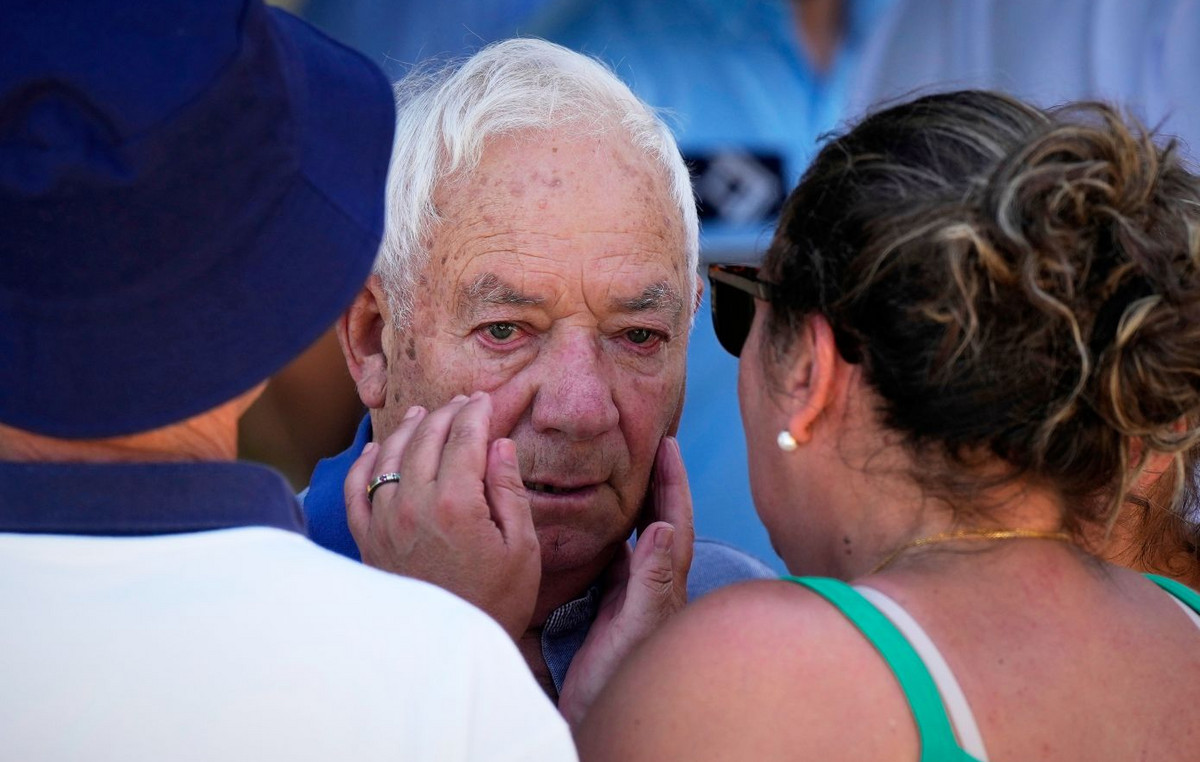Russia fired a missile into space last week. Far from being an anomaly, it was just one more test that major powers have been carrying out in recent months, in the context of huge announcements about nuclear issues and an escalation of cyberattacks, such as the one against the United States in May.
Is the world, then, immersed in an arms race at all levels?
Russian President Vladimir Putin himself said in early November that his country would deploy hypersonic missiles in 2022, just after China tested its own hypersonic missile this year.
The United States tested its own hypersonic missile in October, albeit apparently without success.
Here are some key points about this alarming situation:
Missiles and more missiles for an arms race around the world
According to US Space Command, in November Russia tested a DA-ASAT anti-satellite missile that hit a satellite and created more than 1,500 traceable orbital fragments.
State Department spokesman Ned Price said it was “irresponsible behavior on the part of a nation state” as the test “will significantly increase the risk to astronauts and cosmonauts on the Space Station.”
Only four countries have successfully tested these weapons: the United States, Russia, China and India, which tested theirs in 2019.
However, all attention now seems to be on the development of hypersonic missiles, which China has recently tested and which Russia hopes to launch its Tsirkon next year.
These weapons travel at about 6,200 kilometers per hour in the upper atmosphere, slightly slower than an ICBM, and the shape of their warhead allows them to maneuver towards a target or away from defenses, making their demolition difficult.
North Korea also claims to have successfully tested a hypersonic missile, joining the select group of countries that master this cutting-edge technology. However, some believe their test may have been a failure.
Control of the number of nuclear weapons relaxed
In March, the UK surprised the international community with an announcement: after claiming that Russia was the main threat to its security, the government of Prime Minister Boris Johnson said it will increase the arsenal of nuclear weapons to reach 260 warheads, of the 225 he has now, and well above the 180 limit he has imposed on himself.
The decision reverses a trend among major nuclear-armed countries, between the United States and Russia, to reduce their atomic arsenals to the strategic minimum possible since the end of the Cold War. And it puts tension in the Nuclear Non-Proliferation Treaty (NPT), which provides for disarmament in its Article VI and to which London, like almost the entire international community, is a signatory.
In the case of the UK, much progress has been made in reducing stockpiles since the peak of 500 warheads in times of the Cold War, and this is the first announcement of an increase since then, according to the disarmament NGO Nuclear Threat Initiative.
In early November, the US Department of Defense warned of the growth of China’s nuclear arsenal, which could reach 1,000 warheads by the end of this decade. There have also been reports of new missile silo bases being built in its western deserts.
China currently has about 290 warheads, so the Pentagon’s estimated increase through the late 2020s would bring its arsenal closer to that of the United States and Russia, which have 1,750 and 1,570 warheads respectively, according to the Stockholm International Peace Research Institute , a disarmament organization based in Sweden.
Although in the case of these two countries, they are just deployed and ready-to-use warheads. If you count the stored warheads, many of them in the process of being dismantled, the arsenals come to 5,800 and 6,375, respectively.
The United States and Russia have yet to show signs of seeking to increase their nuclear arsenals, but during Donald Trump’s government the main treaty between the two powers – the New START, signed in 2010 – was on the verge of collapse after the White House criticized .
In February, after Joe Biden’s inauguration, the United States and Russia finally extended New START, which, among other issues, sets limits on the number of deployed warheads (1550, along with 700 launch devices) and mechanisms for verification it. It will continue, in principle, until February 2026.
The new START is the last arms control treaty between the United States and Russia, after Trump ordered the withdrawal of the Intermediate Range Nuclear Forces (INF) Treaty in 2019, and then-President George Bush did the same to the Anti-Ballistic Missile Treaty (ABM) in 2001.
Aukus, or Australia’s nuclear submarine
In September, the governments of the United States, the United Kingdom and Australia announced the launch of Aukus (a contraction of the English names of member countries), “a new, reinforced trilateral security association”, according to Australian Prime Minister Scott Morrison. its main objective is to neutralize China’s influence in the Pacific.
“The United States, Australia and the United Kingdom have been loyal and capable partners for a long time and today we are even closer,” said US President Joe Biden.
But the most important detail of the new Aukus is the purchase of nuclear-powered submarines by Australia, which will become the seventh country to operate these ships after the United States, China, United Kingdom, France, India and Russia.
Of that select group, Australia will be the only country to handle this technology without nuclear weapons, which poses a threat to nuclear non-proliferation efforts.
“This allows Australia to play at a much higher level and enhance American capabilities,” said a senior Biden government official. “This technology is extremely sensitive. It is, frankly, an exception to our policy in many respects,” he added.
Translated text. Read the original in English.
Reference: CNN Brasil
I’m James Harper, a highly experienced and accomplished news writer for World Stock Market. I have been writing in the Politics section of the website for over five years, providing readers with up-to-date and insightful information about current events in politics. My work is widely read and respected by many industry professionals as well as laymen.







